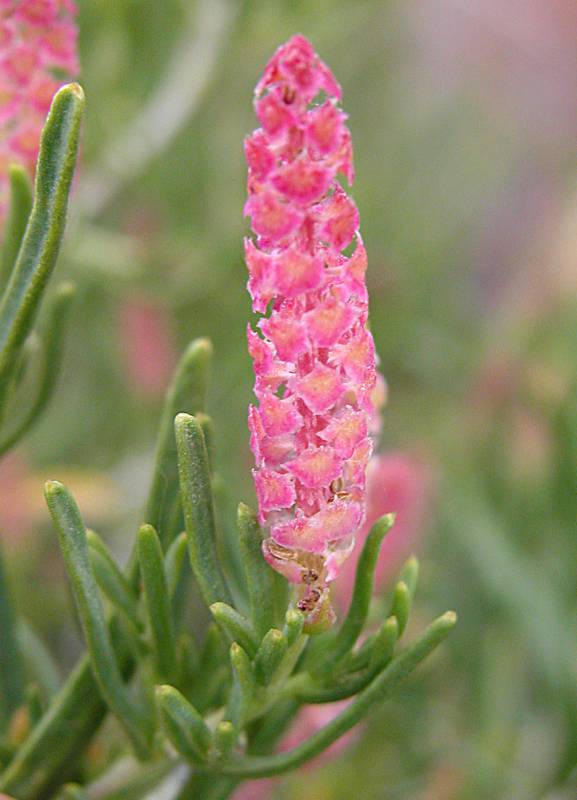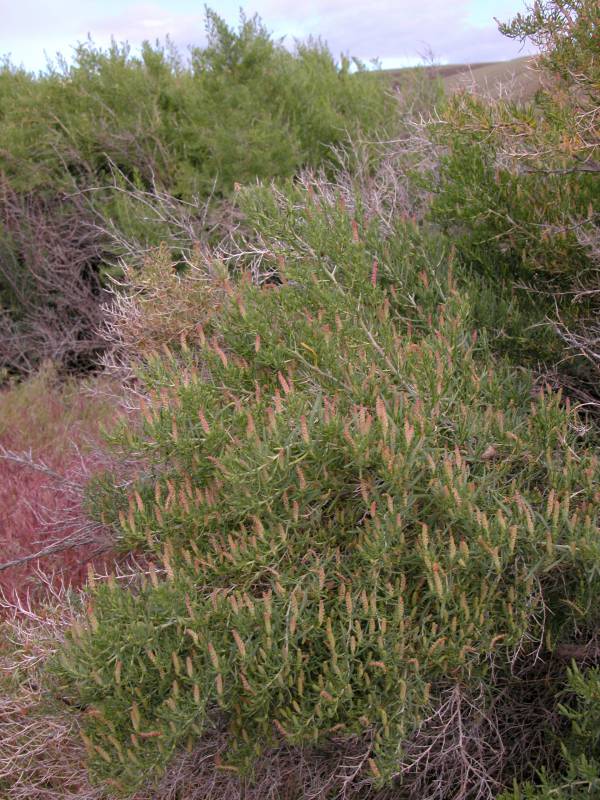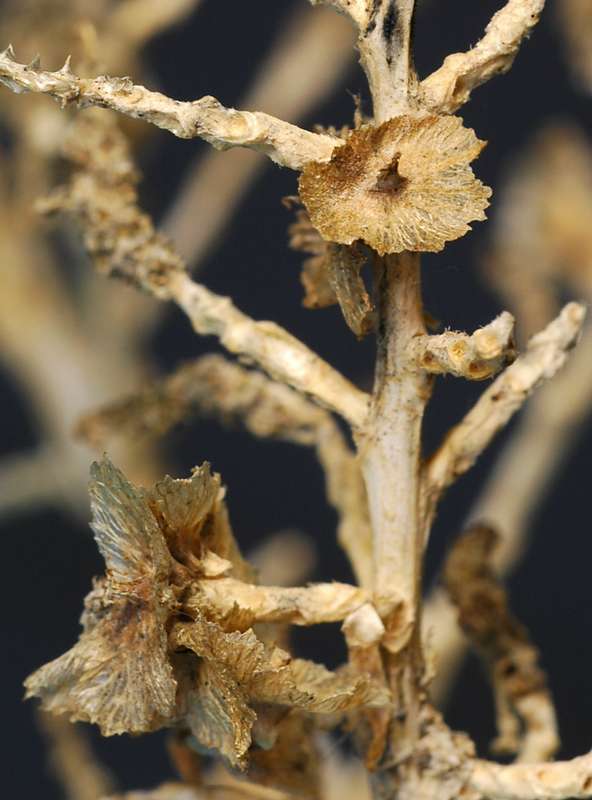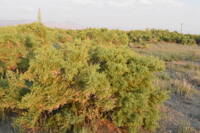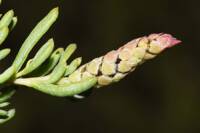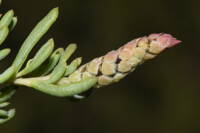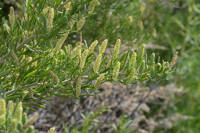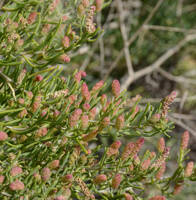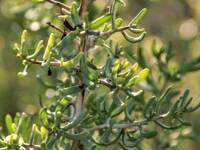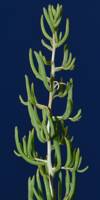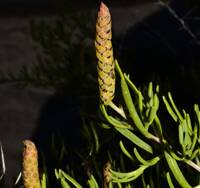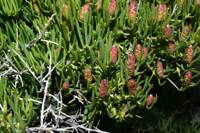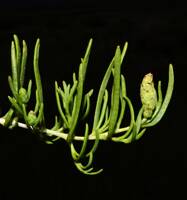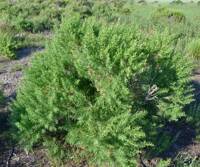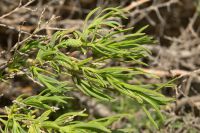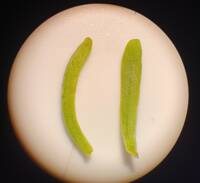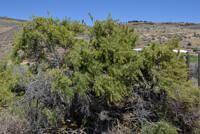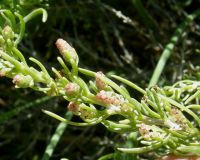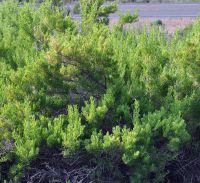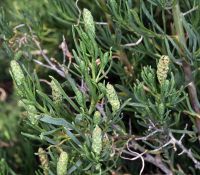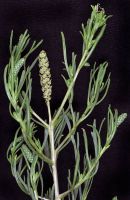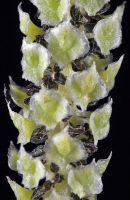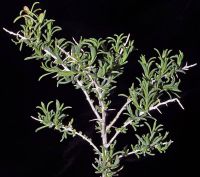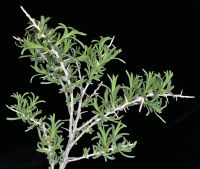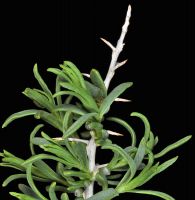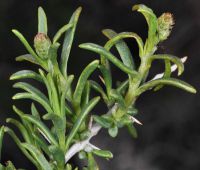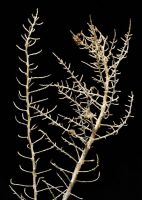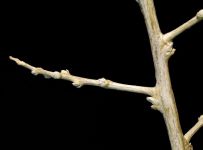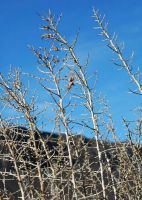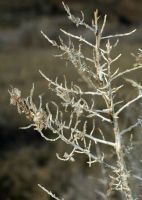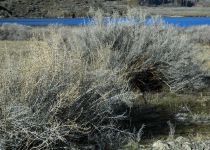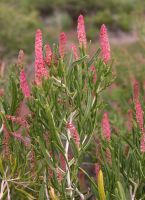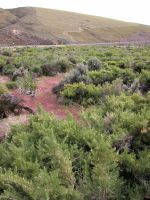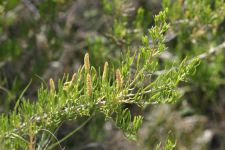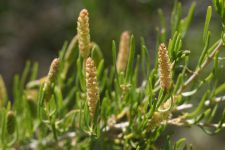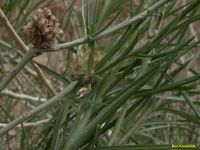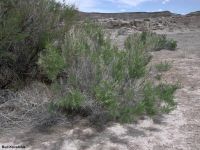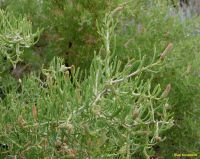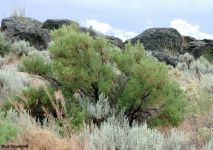Distribution: Occurring east of the Cascades crest in Washington; Washington to California, east to the Rocky Mountains and northern Great Plains.
Habitat: Saline or alkaline, usually heavy soils of the drier regions.
Flowers: May-July
Origin: Native
Growth Duration: Perennial
Conservation Status: Not of concern
Pollination: Wind
Monoecious, spreading, whitish-barked shrub up to 2.5 m. tall, the branches numerous, rigid, spreading, many of them spine-tipped.
Leaves alternate, deciduous, 1.5-4 cm. long, fleshy, linear, and nearly terete.
Flowers in numerous, axillary spikes 1-3 cm. long, closely packed, naked; staminate flowers uppermost, consisting 2-3 stamens covered by a peltate scale; the pistillate lower flowers few, the perianth cup-like, completely surrounding the ovary, 1 mm. long at flowering, but greatly enlarged in fruit, the upper portion free and flaring widely to form a wing-like border; styles 2.
Fruit 4-5 mm. long, cuplike below the wing, which is nearly 1 cm. broad.
Publication: Not. Milit. Reconn. 149. 1848.
Fremontia vermiculata (Hook.) Torr.
Sarcobatus maximilianii Nees
PNW Herbaria: Specimen records of Sarcobatus vermiculatus in the Consortium of Pacific Northwest Herbaria database
WA Flora Checklist: Sarcobatus vermiculatus checklist entry
OregonFlora: Sarcobatus vermiculatus information
E-Flora BC: Sarcobatus vermiculatus atlas page
CalPhotos: Sarcobatus vermiculatus photos

